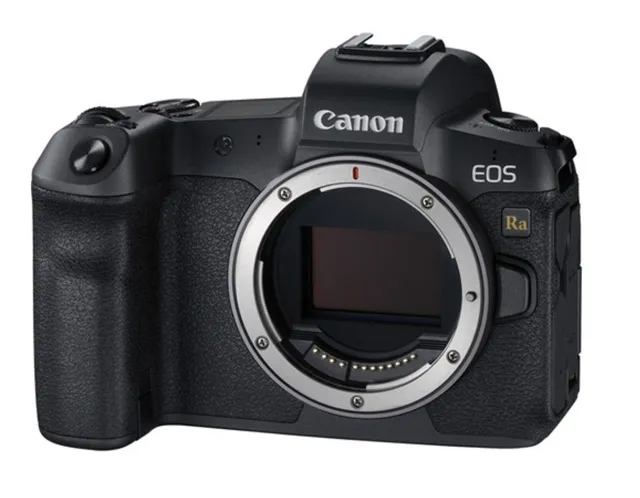
The Canon EOS Ra is a mirrorless digital camera designed specifically for astrophotography. It is a modified version of the Canon EOS R with enhanced sensitivity to hydrogen-alpha (Hα) wavelengths, making it ideal for capturing celestial objects. Key features include:
- Full-Frame CMOS Sensor: It has a 30.3 megapixel full-frame CMOS sensor, providing high resolution and detailed images.
- Enhanced IR Filter: The EOS Ra is equipped with a modified IR filter that allows approximately four times more transmission of hydrogen-alpha light (656nm) compared to standard cameras. This enables the capture of vivid red hues in nebulae and other astronomical phenomena.
- ISO Range: The camera supports an ISO range of 100-40,000, expandable to 50-102,400, allowing for excellent low-light performance essential for night sky photography.
- 4K Video: It can record 4K video, useful for creating time-lapse sequences of the night sky.
- Dual Pixel CMOS AF: This autofocus system provides fast and accurate focusing even in low light, which is crucial for astrophotography.
- Vari-angle Touchscreen: The 3.15-inch vari-angle touchscreen LCD allows for flexible viewing angles, making it easier to shoot from various positions, especially when the camera is mounted on a telescope.
- Compatibility with RF and EF Lenses: The EOS Ra is compatible with Canon RF lenses and, with an adapter, Canon EF and EF-S lenses, providing a wide range of optical options for different astrophotography needs.
- Built-in EVF: The 3.69-million dot electronic viewfinder (EVF) ensures clear and accurate framing and focusing in dark conditions.
- Connectivity: It includes Wi-Fi and Bluetooth for easy image transfer and remote control.
The Canon EOS Ra is designed to meet the specific needs of astrophotographers, providing specialized features that enhance the ability to capture stunning images of the night sky. Its enhanced IR sensitivity, coupled with the high resolution and low-light performance, make it a powerful tool for both amateur and professional astrophotographers.
- Log in to post comments
